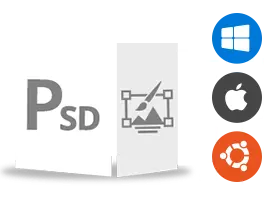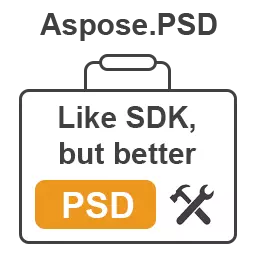Sharpening BMP Images and Saving as PSD: Enhancing Image Quality and Versatility
Achieve improved sharpness and enhance the level of detail in BMP images, while enjoying the convenience of saving them in the PSD format.
In the realm of digital image processing, the quality and versatility of visual content play a crucial role. One common objective is to improve image sharpness while retaining details, ensuring optimal visual appeal. Additionally, the ability to save images in the widely used PSD (Photoshop Document) format provides flexibility for further editing and manipulation. In this essay, we will explore the process of sharpening BMP (Bitmap) images and saving them as PSD, highlighting the benefits and applications of these techniques.
Sharpening BMP Images: BMP is a popular uncompressed raster graphics file format that maintains image quality without any loss of information. However, BMP images can sometimes lack the desired level of sharpness, appearing soft or blurry. To enhance the sharpness, various image processing techniques can be employed:
- Unsharp Masking: Unsharp masking is a widely used sharpening technique that enhances the edges and details in an image. It involves creating a blurred copy of the original image, subtracting it from the original, and boosting the contrast of the result. This process increases the perception of sharpness by increasing the contrast at edges.
- High-pass Filtering: High-pass filtering enhances the fine details in an image while reducing low-frequency components. By subtracting a blurred version of the image from the original, the high-pass filter accentuates the edges and fine details. This technique effectively sharpens the image without introducing significant artifacts.
- Edge Enhancement: Edge enhancement techniques emphasize the edges in an image, making them more distinct and prominent. These techniques enhance the sharpness by applying filters that amplify high-frequency components, emphasizing the transitions between pixels.
- Frequency Domain Techniques: Frequency domain sharpening techniques, such as Fourier Transform, involve converting the image from the spatial domain to the frequency domain. Manipulations can be performed in the frequency domain to enhance high-frequency components, resulting in sharper images when transformed back to the spatial domain.
- Local Contrast Enhancement: Local contrast enhancement methods, such as the use of adaptive filters or histogram equalization, can effectively enhance the sharpness of specific regions within an image. These techniques identify areas with low contrast and boost their local contrast, leading to sharper and more detailed results.
By applying these sharpening techniques to BMP images, one can significantly improve the overall sharpness and detail of the image, making it visually appealing and impactful.
Saving as PSD: Once the BMP image has been sharpened and its visual quality has been improved, saving it in the PSD format provides several advantages:
- Retaining Layers and Editability: The PSD format supports multiple layers, allowing for non-destructive editing and adjustments. This means that each element of the image can be edited separately without affecting the others. By saving the sharpened BMP image as a PSD, one can preserve the different layers and easily make further modifications or enhancements.
- Preserving Transparency: PSD files support transparency, enabling the use of alpha channels to define areas of opacity or transparency. This feature is especially useful for images that will be used in graphic design, web design, or compositing, as it allows for seamless integration with other elements and backgrounds.
- Compatibility and Workflow: Adobe Photoshop, one of the most popular image editing software, is the primary tool for working with PSD files. Saving a sharpened BMP image as a PSD ensures compatibility and smooth integration into existing workflows, particularly when collaborating with other designers or photographers.
Sharpening BMP images and saving them as PSD files offer significant benefits in terms of image quality, editability, and versatility. The PSD format, with its support for layers, transparency, and compatibility with Adobe Photoshop, provides a flexible and powerful solution for further editing, manipulation, and integration into various creative workflows. By combining these techniques, professionals and enthusiasts can elevate the quality and impact of their visual content, creating visually stunning images that stand out in a saturated digital landscape.
In conclusion, sharpening BMP images using techniques like unsharp masking, high-pass filtering, edge enhancement, frequency domain methods, and local contrast enhancement can greatly improve their sharpness and detail. Saving the sharpened images as PSD files offers the benefits of retaining layers, preserving transparency, and ensuring compatibility with different image editing software. These processes empower users to enhance image quality, maintain editability, and unlock the versatility required for various creative projects.
Our app, powered by Aspose.PSD, harnesses the capabilities of a powerful virtual instrument. All files undergo processing using Aspose APIs, trusted by numerous Fortune 100 companies in 114 countries. Developers benefit from our API in .NET or JAVA, which offers extensive documentation, well-defined code samples, and dedicated support from an experienced team.




